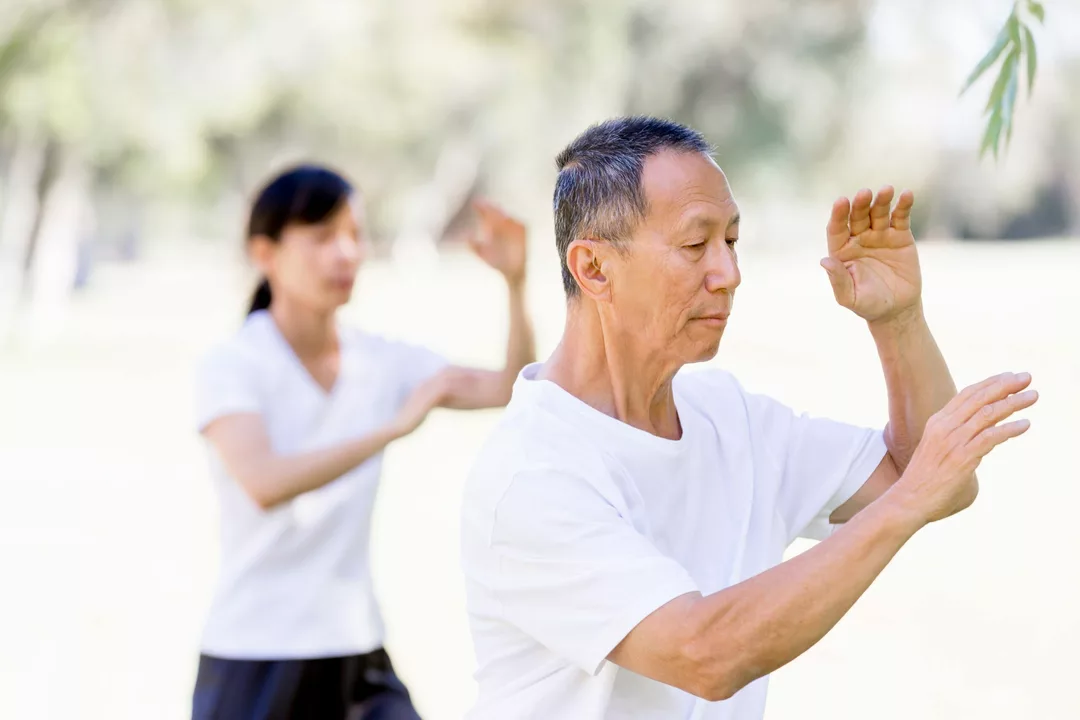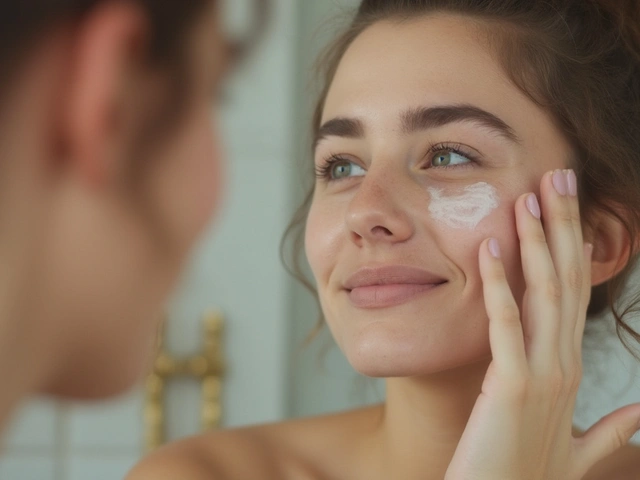Understanding Osteoporosis and Tai Chi
Osteoporosis is a condition in which the bones become weak and fragile, leading to a higher risk of fractures. This can significantly impact the quality of life of those affected by it. Tai Chi, on the other hand, is a gentle and low-impact exercise that has been practiced for centuries in China. It incorporates slow, flowing movements with deep breathing and meditation, making it an ideal exercise option for individuals with osteoporosis.
In this article, we will explore the various benefits of Tai Chi for osteoporosis patients and how it can help improve their overall health and well-being. So let's dive right in!
Improving Balance and Reducing Fall Risk
One of the most significant benefits of Tai Chi for osteoporosis patients is its ability to improve balance and reduce the risk of falls. Falls are a leading cause of fractures among individuals with osteoporosis, and preventing them is crucial to maintaining bone health. Tai Chi focuses on slow, controlled movements that help to strengthen the muscles and improve coordination, ultimately reducing the risk of falls and fractures.
Several studies have shown that regular Tai Chi practice can significantly improve balance and reduce the risk of falls in older adults. In one study, seniors who practiced Tai Chi for six months had a 43% reduction in falls compared to those who did not practice the exercise. This can be a game-changer for osteoporosis patients, as preventing falls can significantly impact their quality of life and overall health.
Enhancing Bone Mineral Density
Another benefit of Tai Chi for osteoporosis patients is its potential to increase bone mineral density (BMD). BMD is a measure of the amount of minerals, such as calcium and phosphorus, in the bones. A higher BMD indicates stronger and healthier bones, reducing the risk of fractures.
While Tai Chi is a low-impact exercise, it still puts stress on the bones, which can stimulate bone growth and slow down bone loss. Some studies have shown that practicing Tai Chi can lead to a modest increase in BMD, especially in postmenopausal women who are at a higher risk of developing osteoporosis. By incorporating Tai Chi into their exercise routine, osteoporosis patients can potentially improve their bone health and reduce the risk of fractures.
Boosting Muscle Strength and Flexibility
Muscle strength and flexibility play a crucial role in maintaining balance and preventing falls. Tai Chi is an excellent way to improve both of these aspects, as it involves a series of slow, flowing movements that work various muscle groups. By practicing Tai Chi regularly, osteoporosis patients can strengthen their muscles, improve their flexibility, and ultimately reduce the risk of falls and fractures.
Moreover, stronger muscles can help support the bones and joints, reducing the pressure on weakened bones. This can be particularly beneficial for osteoporosis patients, as it can help alleviate pain and discomfort caused by the condition.
Reducing Stress and Improving Mental Well-being
Living with osteoporosis can be stressful and impact an individual's mental well-being. Tai Chi is not only a physical exercise but also a form of meditation that can help reduce stress and promote relaxation. The deep breathing and mindfulness aspects of Tai Chi can help osteoporosis patients manage stress more effectively, leading to a better quality of life.
Moreover, studies have shown that Tai Chi can improve overall mental well-being, including reducing symptoms of anxiety and depression. By incorporating Tai Chi into their daily routine, osteoporosis patients can benefit both physically and mentally, promoting a more balanced and healthier lifestyle.
Increasing Social Interaction and Support
Joining a Tai Chi class can be a great way for osteoporosis patients to meet new people and form connections with others who share similar interests. Social interaction and support are essential for overall well-being, and being part of a Tai Chi community can provide a sense of belonging and connection. This can be particularly beneficial for older adults who may be at risk of social isolation.
Furthermore, participating in a group exercise class can also enhance motivation and commitment to regular exercise, which is crucial for maintaining bone health and preventing fractures in osteoporosis patients.
Adapting Tai Chi to Individual Needs
One of the advantages of Tai Chi is that it can be easily adapted to suit the needs and abilities of each individual. For osteoporosis patients, it is essential to work with a qualified instructor who understands the specific needs and limitations associated with the condition. By modifying the movements and intensity of the exercise, Tai Chi can be made safe and effective for individuals with osteoporosis.
In conclusion, incorporating Tai Chi into a regular exercise routine can provide numerous benefits for osteoporosis patients, including improved balance and reduced fall risk, enhanced bone mineral density, increased muscle strength and flexibility, reduced stress, and improved mental well-being. With its gentle, low-impact nature and adaptability, Tai Chi is an ideal exercise option for those living with osteoporosis.








14 Comments
harvey karlin June 3, 2023
Tai Chi is the ultimate low-impact HAMMER for bone density. No jarring impacts, no gym bros yelling - just slow, meditative force application that tricks your skeleton into thinking it’s still 25. It’s biomechanical whispering to your osteoblasts.
And the balance? Game-changer. My grandma went from walker to cane in 4 months. No falls. No ER visits. Just zen and gravity.
Anil Bhadshah June 5, 2023
I teach tai chi to seniors in Delhi. One lady, 78, had a hip fracture 2 years ago. Now she does the form with eyes closed. 🙏 Bone density scan improved 8% last year. It’s not magic - it’s consistency.
Also, the breathing? Helps with cortisol. Big time.
lili riduan June 6, 2023
I cried the first time I stood on one leg without holding the wall. Like… I actually felt like my body wasn’t broken. Tai Chi didn’t fix me - it reminded me I still had a body. 🥹
Trupti B June 7, 2023
i did tai chi for a week and my back hurt more lmao maybe its just not for me
Dilip p June 8, 2023
The philosophy of Tai Chi aligns with Ayurvedic principles of Vata balance - slow, grounded movement pacifies the nervous system. In Vedic science, bone health is tied to Asthi Dhatu, which flourishes under calm, rhythmic stimulation.
Modern studies confirm this. The rhythm isn’t just movement - it’s resonance.
andrew garcia June 9, 2023
I’ve seen this work firsthand. My father, 82, osteoporosis diagnosis in 2018. Started Tai Chi in 2019. No fractures since. He says it’s the only thing that makes him feel ‘light’ again.
It’s not exercise. It’s reconnection.
ANTHONY MOORE June 10, 2023
I used to think this was just slow dancing for old people. Then my mom did it for 6 months. Now she hikes. Like, actual trails. No poles. No fear.
Turns out, your bones don’t need to be punished to get stronger. They just need to feel safe.
Leslie Ezelle June 11, 2023
You people are being way too nice. This isn’t some feel-good wellness trend - it’s a clinical intervention with Level 1 evidence. The NIH has funded 17 studies on this. If your doctor hasn’t prescribed Tai Chi, they’re asleep at the wheel.
Stop treating it like yoga for grandmas. It’s preventative medicine.
VEER Design June 12, 2023
Tai Chi is the original biofeedback loop. Your mind whispers to your muscles, your muscles whisper to your bones, your bones whisper back - and suddenly you’re not just moving… you’re *listening*.
It’s not about strength. It’s about harmony. The body remembers what the mind forgets.
Tejas Manohar June 14, 2023
As a geriatric physical therapist with over two decades of clinical experience, I can unequivocally state that Tai Chi represents one of the most efficacious, evidence-based, non-pharmacological interventions for osteoporotic populations. The neuromuscular recalibration, proprioceptive enhancement, and axial loading dynamics are uniquely suited to mitigate fracture risk without compromising skeletal integrity.
It is, without hyperbole, a paradigm-shifting modality.
Mohd Haroon June 14, 2023
To speak of Tai Chi as mere exercise is to mistake the river for its current. It is the stillness within motion - the quiet rebellion against the tyranny of speed. In a world that demands force, it offers presence.
For the bones, which are not inert matter but living tissue attuned to rhythm, this is not therapy - it is homecoming.
Vivian Chan June 15, 2023
I’ve read the studies. But who funds them? Big Pharma doesn’t profit from slow movement. The NIH? Sure. But how many of those researchers have ties to wellness corporations?
What if Tai Chi works because it’s cheap? Because it doesn’t require pills, implants, or insurance claims?
Just sayin’.
Kathleen Root-Bunten June 17, 2023
I’m curious - are there any studies comparing Tai Chi to water aerobics or Pilates for BMD in postmenopausal women? I’ve seen conflicting meta-analyses and I’m trying to figure out the optimal protocol.
Also, is there a recommended frequency? Daily? 3x/week?
Jason Kondrath June 18, 2023
Look, I get the hype. But this is just low-effort cardio with a spiritual veneer. If you want bone density, lift weights. If you want balance, do single-leg stands with eyes closed.
Tai Chi is a pretty ballet for people who don’t want to sweat. Don’t mistake tradition for science.